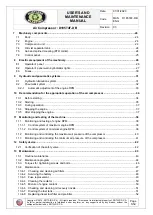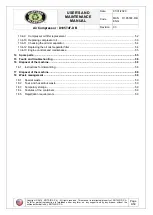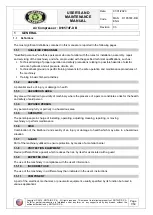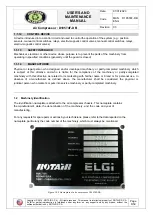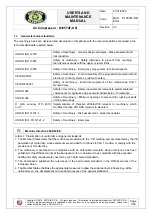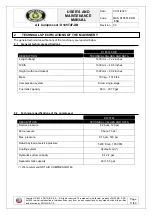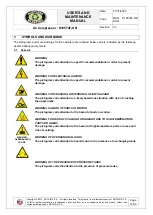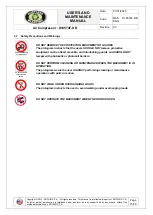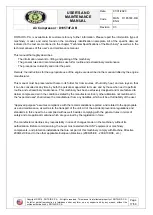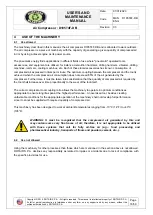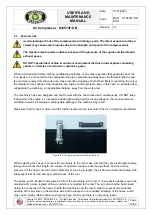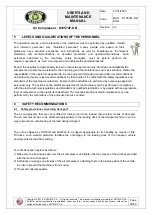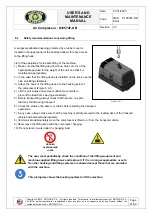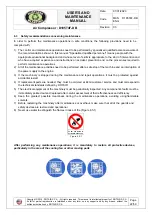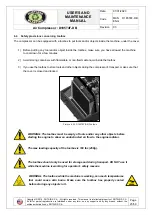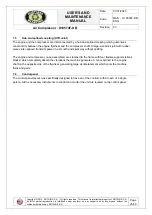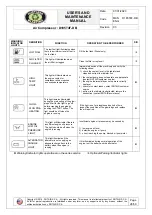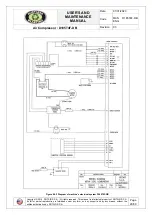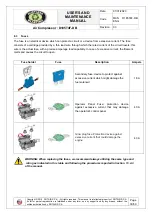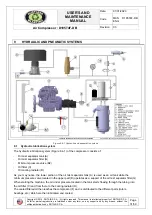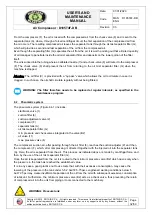
USER'S AND
MAINTENANCE
MANUAL
Date:
01/31/2020
Code
MAN D185T4F-DB
ENG
Air Compressor : D185T4F-DB
Revision 03
Copyright © 2014, ROTAIR S.P.A. - All rights reserved
.
This manual is intellectual property of ROTAIR S.P.A.
Its full or partial reproduction is forbidden under any form, on any support and by any means, without the
written authorization by ROTAIR S.P.A.
Page
19/59
4.3 Residual risk
Avoid standing in front of the compressed air discharge ports. The direct exposure to the air
stream may cause severe injuries due to the strength and speed of the compressed air.
The machine must operate outdoors because of the presence of the engine and the relevant
exhaust gases.
DO NOT operate the machine in an indoor environment that has an atmosphere containing
vapors or mixtures of corrosive or explosive gases.
When performing demolition, drilling, sandblasting activities, or any other operation that generates dust, the
tool needs to be connected to the compressor through a pressure-resistant hose of sufficient length to keep
the machinery away from the work area, thus preventing clogging of both the air filters mounted on the unit or
the radiator for the cooling of the lubrication and engine cooling systems. Even in this case, an educated user
will operate the machinery an appropriate distance away from the work area.
The machinery has been designed and built to work with the hood closed and, consequently, DO NOT keep
it open when the engine is on because besides generating harmful sound emissions, the required internal
ventilation would be interrupted, and possible damage to the machine may result.
Make sure that the hood is closed and the latches located on the rear side of the air compressor are latched.
Figure 4.3-1 Engine compartment hood latches
When selecting the hoses to connect the machinery to the tool, make sure that they are sized appropriately,
taking into account their length, the volume of air which needs to pass through them, and the service
pressures. If the hoses are too small in diameter or too long in length, the air flow would be interrupted, with
subsequent loss of load and poor performance of the tool.
The hoses, which transmit compressed air from the machinery to the tool or to any device applied, are to be
provided with a valve located at the end which is connected to the tool. The
air
valve shall be held closed
during the connection of the hoses to both the machinery and the tool in order to prevent an accidental
opening of the
air
valve on the machine side and to prevent an uncontrolled whipping of the hoses, which
may cause injuries. Before disconnecting any hose, make sure there is no pressure inside.

